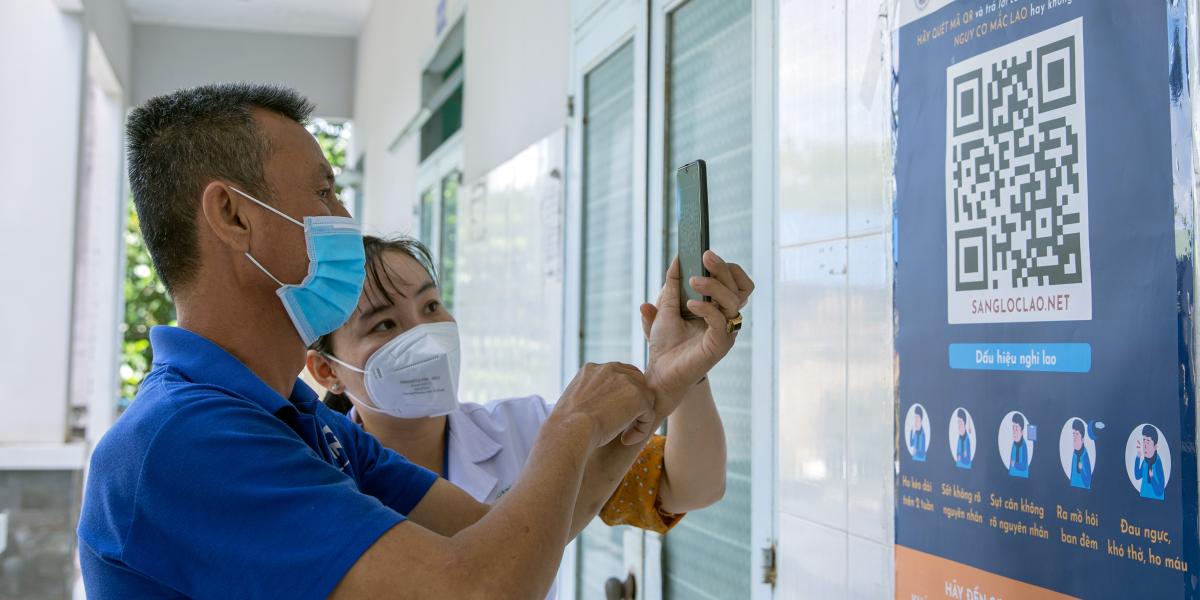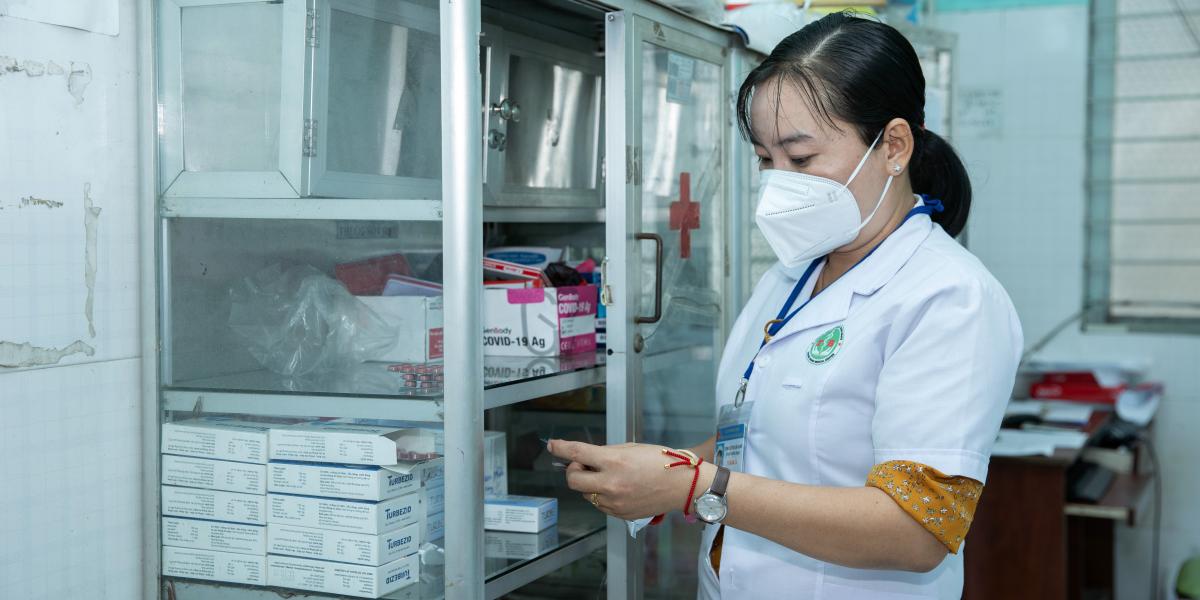How One Nurse is Working to End Tuberculosis in Vietnam
“USAID's support has really helped me to feel more confident. I have learned how to screen clients based on their symptoms and how to support their treatment.”
“How are you feeling?” asks Giang as she hands a prescription to her patient, Mr. Vu. “I’m doing well,” he says. “I am not sick or tired anymore.” She smiles, happy that he is responding so well to the tuberculosis treatment. Giang is a nurse at the An Tinh health station in Tay Ninh, Vietnam. For three years she has been treating patients and working in the community to raise awareness about tuberculosis. Currently, 10 people are under her care and she considers it a privilege to be part of their recovery.
“Some people are initially shy, staying far away from health staff. But we explain that with tuberculosis treatment and infection prevention, there is nothing to be afraid of and soon people become more open.” When Mr. Vu was initially diagnosed, she counseled him on how to prevent transmission to his wife and two children. None of his family members have contracted tuberculosis.
Vietnam is the 10th highest burden tuberculosis country in the world with one of the lowest treatment coverage rates in the Asia region. Each year, it is estimated that 170,000 people are infected, but less than 60% receive treatment. USAID partners with the Government of Vietnam in the ambitious effort to end tuberculosis by 2030 through robust detection, treatment, and prevention.
Giang worked closely with USAID learning how to curb transmission and, importantly, how to mitigate the side effects of tuberculosis treatment, the leading reason patients stop taking their medicine. When a person comes to the clinic, Giang helps them register with a screening tool to assess their risk. Those who already have common tuberculosis symptoms; fatigue, fever, weight loss, or coughing, she directs to self screen online. Because her small clinic does not have an X-ray machine, USAID trained her on how to instruct people to take their own sputum sample for GeneXpert screening, a rapid tuberculosis bacterial test. She then packages the sample in a medically secure way to be sent to the district hospital.
Since 2020, USAID has partnered with Vietnam to deploy the highly effective Double X strategy, which uses chest X-rays and GeneXpert to diagnose active and latent infection. Studies have shown that treating both active and latent cases is necessary to sustain a decline in infections. USAID is now working with the National Tuberculosis Program, in collaboration with the Global Fund, to scale up the Double X strategy nationwide in order to detect and treat cases of tuberculosis, improve preventative measures, and to reduce transmission.
“Now that I know how to properly identify the clients who should be tested with GeneXpert, we are finding more cases,” Giang explains. “USAID's support has really helped me to feel more confident. I have learned how to screen clients based on their symptoms and how to support their treatment.” She looks forward to seeing Mr. Vu complete his treatment successfully. “The best feeling is when the patients come to see me after they are tuberculosis-free,” she adds. “They are so happy.”




